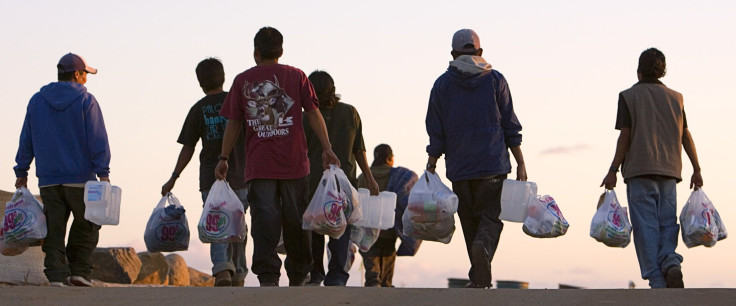Money Sent Home By Migrants Spurs Development In Emerging Economies Over Foreign Aid

More money than ever is flowing out of the world’s more developed economies and back to the home countries of immigrant workers in the form of remittances, according to the most recent figures from the World Bank.
In 2012, an estimated $530 billion in remittances was recorded, up from just over $479 billion in 2011.
With the exception of a brief and nominal dip in remittances following the 2008 global financial crisis, the trend has largely been moving upward, more than tripling over the course of a decade from $171.8 billion in 2002.
“It reinforces the message that remittances are one of the most stable and reliable flows of capital into developing countries,” said Kathleen Newland, director of migrants, migration and development and refugee protection programs at the Migration Policy Institute in Washington, D.C.
Newland added that a common misconception about remittances is that they only support consumption, but in actuality they are integral in spurring development at the household level as they often go toward paying for education, medical care and housing.
In fact, the total amount of remittances now exceeds the total amount of foreign aid budgets ($133.5 billion in 2011) more than threefold.
“Remittances are much more significant than foreign aid in terms of development, and yet they are given much less attention in financial policy discussions,” Newland noted.
A major reason for this is that remittances represent personal income, which governments cannot typically commit to a specific area of development, unlike foreign aid. But the fact remains that they are still driving development in many countries.
India was the largest beneficiary of remittances in 2012 with an estimated $69.8 billion, followed by China ($66.3 billion), the Philippines ($24 billion), Mexico ($24 billion) and Nigeria ($21 billion).
As a share of the economy, the lineup is rather different. Remittances in 2012 accounted for 46.9 percent of Tajikistan’s GDP, 31 percent of Liberia’s and 29.1 percent of Kyrgyzstan’s.
Estimated figures for the 2012 outflow of remittances are not yet available, but the United States topped the list in 2011 with $51.6 billion, followed by Switzerland ($30.8 billion), Saudi Arabia ($28.5 billion), Russia ($22.7 billion) and Germany ($15.6 billion).
Another misconception Newland addresses is that remittances represent a net loss of capital for the sending countries.
“Much of it ends up coming back in the form of payments for goods and services provided by those countries,” Newland said.
Speaking of the U.S. in particular, Newland said remittances, which represented less than 1 percent of GDP in 2011, are far more beneficial to the economy than not.
“The U.S. benefits tremendously from globalization in general, and from immigration specifically, as well as from a rising tide of development,” she said, meaning that the more money flows into developing countries, the greater potential U.S. companies have to expand into their markets.
“It’s an aspect of globalization that’s here to stay,” she said.
© Copyright IBTimes 2025. All rights reserved.





















